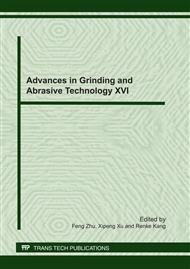p.317
p.322
p.327
p.332
p.337
p.342
p.347
p.352
p.357
Study on the Efficient Processing Technology of Countertop Board with Disc Circular Saw Blades
Abstract:
In the process of cutting Countertop Board with Disc Circular Saw Blades, the intersecting that generated by them was an arc, which would improve the stress state of the blade greatly, therefore the efficiency of processing was improved significantly. However, in the process of cutting, the arc formed by them would be changing with the changing of the cutting depth. For the reason that the appropriate cutting radius of the Disk Circular Saw Blades also would be changing with the changing of the cutting depth. In this document, we can get the relationship between the appropriate cutting radius and the cutting depth, as well as the relationship between the the reasonable cutting radius and the structure and size of the Disc Circular Saw Blades through the theoretical analysis and calculations on the basis of the experiment, which could provide a reliable basis for the efficient and rational use of Disc Circular Saw Blades[1].
Info:
Periodical:
Pages:
337-341
Citation:
Online since:
July 2011
Authors:
Price:
Сopyright:
© 2011 Trans Tech Publications Ltd. All Rights Reserved
Share:
Citation:


